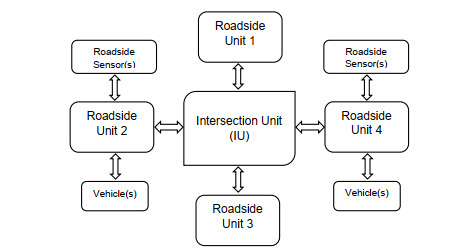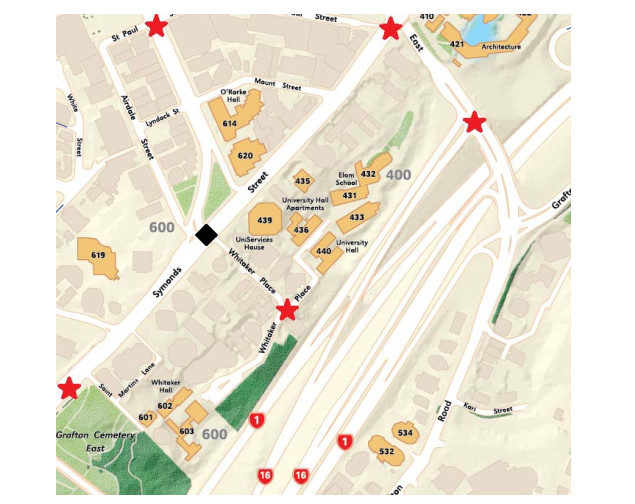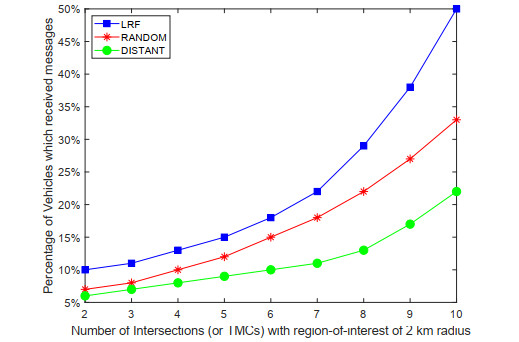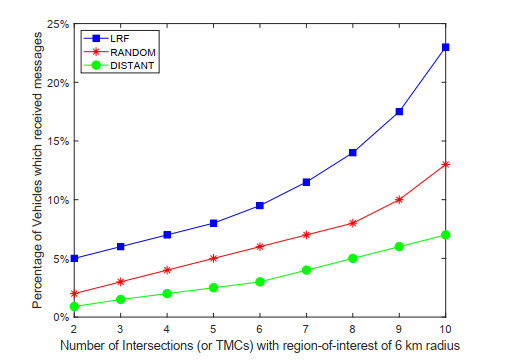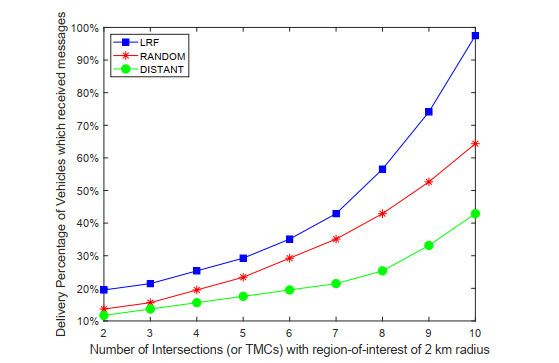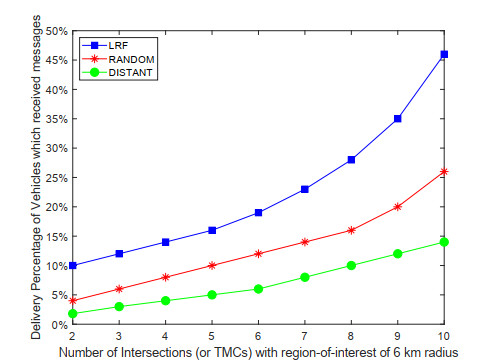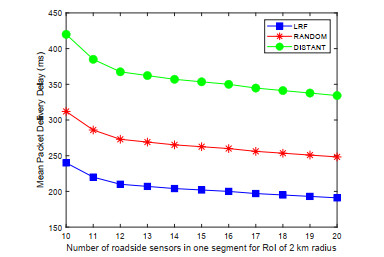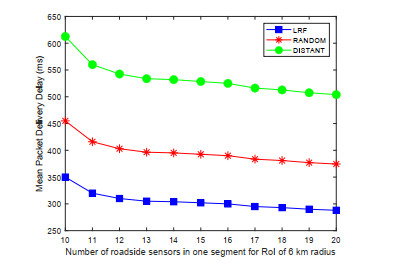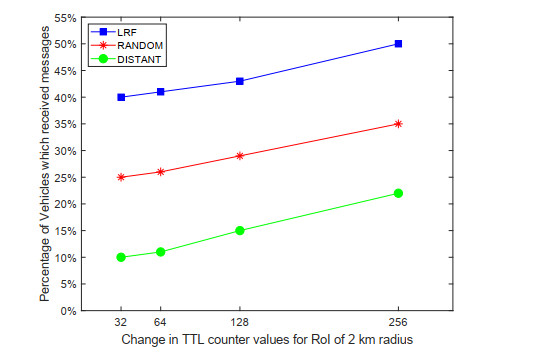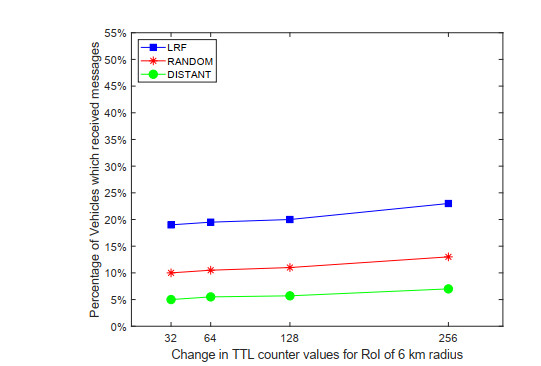1.
Introduction
Covid-19 is a pandemic infections which globally has caused damage to human lives and also effect other lining things. This coronavirus has been a terrible epidemic for mankind around the globe. The transmission of COVID-19 has significant negative effects on the lives of all people, and the many people have died from the virus. The first attack of these viruses occurred on last days of 2019. Symptoms of unfamiliar conditions of lungs, coughing, fever, tiredness and breathing problems were seen in the people of Wuhan, China. The healthy territory of China as well as its Central Infections Control (CDC) quickly reconsidered the cause of such signs, a viral virus from the population of Coronaviruses, and it was named as COVID-19 by the World Health Organization (WHO) [1,2,3].
For the investigation of the new coronavirus in terms of predictions and infectivity, the authors in [4] established a deep analysis algorithm and found that bat and minks are the main sourced of the said virus. Mostly, mathematical models have had an important role in modeling the direct transmission between humans in the outbreak. As demonstrated in the literature, many people were infected in Wuhan and had no contact with other people, but the virus spread very rapidly in the whole province and China [5]. The infected people have a long incubation period, they are not aware of the symptoms and don not know the quarantine time. This infection can easily spread to other people, and many researchers have documented models of COVID-19 [6,7,8,9,10]. Several researchers have developed the COVID-19 time delay models and studied by different aspects. Most of them modified the said models by the application of fractional operators such as Power and Mittag-Leffler law [11,12,13,14,15,16,17,18].
In this article, we have re-considered the COVID-19 mathematical model [19], which has not been investigated under novel piecewise derivative and integrals operators. The considered model has ten agents, namely: Susceptible S, Infectious I, Diagnosed D, Ailing A, Recognized R, Infectious Real Ir, Threatened T, Recovered Diagnosed Hd, Healed H, and Extinct population E. The COVID-19 model has the following form:
where the used parameters in the model with descriptions are given in Table 1.
Modern calculus (MC) has attracted more interest from researchers and scientists in the last 20 years [20,21]. MC, compared to traditional integer-order models, gives novel, accurate, and deeper information on the complicated activity of several infectious disease mathematical models [22,23,24,25]. Because of genetic properties and memory behaviors, integer order problems are not superior to MC problems. Many types of integer order equations are used in mathematical models of the real world. The real phenomena are analyzed for a higher degree of choices and precision by applying the fractional differential equations. Several researchers have done enough work in MC, and the authors in [26] used the Mittag-Leffler derivative and investigated the fractional infectious disease model. In [27], the authors used Atangana-Baleanu-Caputo fractional derivative and studied a mathematical model of Covid-19. The authors in [28] applied the Caputo-Fabrizio operator along with double Laplace transform and found the series solution for the fractional biological model. The scholars in [29] applied a novel fractional order Lagrangian scheme to show the motion of a beam on nanowire. Liaqat et al. [30], established a new scheme to obtain the approximate and exact solution in the sense of Caputo fractional partial differential equation along with variable. Odibat and Baleanu [31] studied a novel system of fractional differential equations involving generalized fractional Caputo operator. Different disease models have been investigated by researchers by using the fractional operators such as [32,33,34,35,36]. By using various operators to solve a variety of issues from the real world, significant work in the area of fractional calculus has been documented by numerous mathematicians and academics [37,38,39,40,41,42,43,44].
A novel operator for piecewise derivative and integrals was presented by Atangana and Araz [45]. The piecewise derivative is divided into two sub intervals: The first interval solution is found out in the sense of Caputo while the second intervals solution is under the ABC derivative. As the time of crossover behavior is not mentioned by the power or Mittag-Leffler law and therefore it is well defined in the piecewise derivative. In order to overcome these challenges, one of the unique ways of piecewise derivative has been proposed in [45]. A new window of cross-over behaviors using these operators has been studied by researchers. Several applications of the aforesaid fractional operators are investigated in the literature by different researchers [46,47,48,49]. Inspired by the above novel operator, we investigate the model taken from [19] under the framework of piecewise Caputo and Atangana-Baleanu operator as follows:
In more detail we can write Eq (1.2) as
We considered the dynamics in terms of piecewise fractional operators. The piecewise operators discuss the crossover and abrupt dynamics very well. Therefore, we treated the said model under the two fractional operators in different intervals. For each operator the qualitative analysis is provided on each subinterval. The UH stability is applied for stability analysis of the system. The system is investigated for approximate solution with the piecewise term and also the fractional parameters in the last expression of the system. This gives the choice for any dynamics of integer order as well as rational values.
2.
Preliminaries
Here we present some definitions regarding Caputo and ABC fractional as well as piecewise derivatives and also integrals.
Definition 2.1. The definition of ABC operator of function K(t) with condition K(t)∈H1(0,T) is :
One can replace Eυ[−υ1−υ(t−ϑ)ϑ] by E1=exp[−υ1−υ(t−ϑ)] in (2.1) and obtain the Caputo-Fabrizio operator.
Definition 2.2. Consider K(t)∈P[0,T], and then the ABC integral is:
Definition 2.3. The Caputo operator of function K(t) is
Definition 2.4. Suppose K(t) is piecewise differentiable. Then, the piecewise derivative with Caputo and ABC operators [26] is
where PCABC0Dυt represents piecewise differential operator, where Caputo operator is in interval 0<t≤t1 and ABC operator in interval t1<t≤T.
Definition 2.5. Suppose K(t) is piecewise integrable, and then piecewise derivative with Caputo and ABC operators [26] is
where PCABC0Iυt represents piecewise integral operator, where Caputo operator is in interval 0<t≤t1 and ABC operator in interval t1<t≤T.
3.
Existence and uniqueness
The existence and the uniqueness results of the suggested model in the piecewise notion are found in this part. We shall now determine whether a solution exists for the hypothetical piecewise derivable function as well as its specific solution attribute. In order to do this, we may use the system (1.3) and can also write the following by way of more explanation:
is
where
where i=1,2,3...,10. Take 0<t≤T<∞ and the Banach space E1=C[0,T] with a norm
We assume the following growth condition:
(C1) ∃ LW>0; ∀ N, ˉW∈E we have
(C2) ∃ CN>0 & MN>0,;
If N is piece-wise continuous on (0,t1] and [t1,T] on [0,T], also satisfying (C2), then (1.3) has ≥1 solution.
Proof. Let us use the Schauder theorem to define a closed sub-set as B and E in both subintervals of [0,L].
Suppose L:B→B and using (4.8) as
Any W∈B, we have
As determined by the previous equation, W∈B. Therefore, L(B)⊂B. Thus, it demonstrates that L is closed and complete. In order to further demonstrate the complete continuity, we also write by using ti<tj∈[0,t1] as the initial interval in the sense of Caputo, consider
Next (3.4), we obtain ti→tj, and then
So, L is equi-continuous in [0,t1]. Consider ti,tj∈[t1,T] in ABC sense as
If ti→tj, then
So, the operator L shows its equi-continuity in [t1,T]. Thus, L is an equi-continuous map. Based on the Arzelà-Ascoli result, L is continuous (completely), uniformly continuous, and bounded. The Schauder result shows that problem (1.3) has at least one solution in the subintervals.
Further, if L is a contraction mapping with (C1), then the suggested system has unique solution. As L:B→B is piece-wise continuous, consider W and ˉW∈B on [0,t1] in the sense of Caputo as
From (3.6), we have
As a result, L is a contraction. As a result, the issue under consideration has only one solution in the provided sub interval in light of the Banach result. Also t∈[t1,T] in the sense of the ABC derivative as
or
This is why L is a contraction. As a result, the issue under consideration has a singleton solution in the provided sub interval in light of the Banach result. So, with (3.7) and (3.9), the suggested problem has unique solution on each sub-interval.
4.
Stability analysis
Here, we prove the H-U stability and different forms for our considered model.
Definition 4.1. Our proposed model (1.1) is U-H stable, if for each α>0, and the inequality
unique solution ¯Θ∈Z exists with a constant H>0,
In addition, if we take the increasing function Φ:[0,∞)→R+, then the above inequality can be written as
if Φ(0)=0, then the obtained solution is generalized U-H stable.
Definition 4.2. Our considered model 1.2 is U-H Rassias stable if, Ψ:[0,∞)→R+, for each α>0, and inequality
unique solution ¯Θ∈Z with constant HΨ>0, so that
If Ψ:[0,∞)→R+ is exist, for the above inequality, then
then there exist a unique solution ¯Θ∈Z with constant HΨ>0, such that
then the obtained solution is generalized U-H Rassias stable.
Remark 1. Suppose a function ϕ∈C(T) does not depend upon Θ∈Z, and ϕ(0)=0. Then,
Lemma 4.2.1. Consider the function
The solution of (4.7) is
Theorem 1. In light of lemma (4.2.1), if the condition LfTυΓ(υ)<1 holds, then the solution of our considered model (1.2) is H-U as well as generalized H-U stable.
Proof. Suppose Θ∈Z is the solution of (1.2), and ¯Θ∈Z is a unique solution of (1.2). Then we have
Case:1 for t∈T, we have
On further simplification
Case:2
By further simplification and using Λ=[(1−υ)Γ(υ)+Tυ2ABC(υ)Γ(υ)], we have
We have
we use
Now, from Eqs (4.11) and (4.12), we have
Therefore, the solution of model (1.2) is H-U stable. Also, if we replace α by Φ(α), then from (4.13),
Now, Φ(0)=0 shows that the solution of our proposed model (1.2) is generalized H-U stable.
We give the following remark to conclude the Rassias stability results and also the generalized form.
Remark 2. Suppose a function ϕ∈C(T) does not depend upon Θ∈Z, and ϕ(0)=0. Then,
Lemma 4.2.2. Solution to the model
hold the relation given below:
where Hf,Ψ,Λ=ΛHf,Ψ.
With the help of remark 2, one can get Eq (4.7).
Theorem 2. The solution of model (4.13) is H-U-R stable if the following conditions hold:
H1) For each Θ,v∈Z and a constant CΦ>0, we get
H2) For each Θ,v,¯Θ,¯v∈Z and constant Lf>0,0<Mf<1, we get
Proof. We prove these results in two cases.
Case:1 for t∈T, we have
On further simplification
Case:2
By further simplification and using Λ=[(1−υ)Γ(υ)+Tυ2ABC(υ)Γ(υ)], we have
We have
We use
Now, from Eqs (4.14) and (4.15), we have
So, the solution of model (1.2) is H-U-R stable.
Remark 3. Suppose a function ϕ∈C(T) does not depend upon Θ∈Z, and ϕ(0)=0; then,
Theorem 3. In light of H1, H2, Remark 3 and 2, the solution of model 1.2 is generalized H-U-R stable, if Mf<1.
Where
H1) For each Θ,v∈Z and constant CΦ>0, we get
and
H2) For each Θ,v,¯Θ,¯v∈Z and constant Lf>0,0<Mf<1, we get
Proof. We obtained our results in two cases:
Case 1: for t∈T, we have
On further simplification
Case 2:
By further simplification and using Λ=[(1−υ)Γ(υ)+Tυ2ABC(υ)Γ(υ)], we have
We have
We use
Now, from Eqs (4.16) and (4.17), we have
So the solution of the model (1.2) is generalized H-U-R stable.
5.
Numerical Scheme for the fractional piecewise COVID-19 model
In this section we derive the numerical scheme for the following Covid-19 model (1.2).
By applying the piece-wise integral to the Caputo and AB derivative, we obtain
At t=tn+1
We put the Newton polynomials, so we obtain
Here
and
The above Eqs (5.3)–(5.12) are the solution for the considered model.
6.
Numerical simulations
In this section we provide the numerical simulation for all the five compartments of the proposed model using the initial data and parameters values taken from [19]. The initial populations are S(0)=1, I(0)=0.001, D(0)=0.002, A(0)=0.0001, R(0)=0.0003, Ir(0)=0.0009, T(0)=0.002,Hd(0)=0.003, H(0)=0.00012, E(0)=0.00014.
The graphical representation of all the ten compartments of the analyzed model has been shown on three different data of fractional orders and time durations in the sense of piecewise Caputo and ABC derivatives. The first compartment of susceptible population is shown in Figure 1a–c, respectively, on two sub intervals. The said class population decreases slowly in the first interval, while in the second interval it decreases very abruptly. On small fractional orders it is stable quickly, and piece wise behaviors are negligible in this case, as shown in Figure 1a, c.
The second compartment of infected population is shown in Figure 2a–c respectively on two sub intervals on three different data of fractional orders and time durations. The said class population grows quickly in the first interval, while in the second interval it decreases very abruptly, as shown in Figure 2a. On small fractional orders it is stable quickly and piece wise behaviors are negligible in this case, as shown in Figure 2c.
The next agent of Diagnosed population is shown in Figure 3a–c respectively on two sub intervals on three different data of fractional orders and time durations. The said class population depends on the behavior of infected population showing the same dynamics but smaller than infectious population. On small fractional orders it is stable very quickly, and piece wise behaviors are negligible in this case, as shown in the Figure 3c.
The next quantity is of Ailing population, shown in Figure 4a-c respectively on two sub intervals on three different data of fractional orders and time durations. The said class population grows quickly in the first interval, while in second interval it decreases very abruptly, as shown in Figure 4a. It also gives the same dynamics as given by the diagnosed population. On small fractional orders it is stable quickly, and piece wise behaviors are negligible in this case as shown in Figure 4c.
Next is the Recognized population, shown in Figure 5a–c respectively on two sub intervals on three different data of fractional orders and time durations. The said class population grows quickly in the first interval, while in second interval it decreases slowly, as shown in Figure 5a. On small fractional orders it converges quickly, and piece wise behaviors are negligible in this case as shown in Figure 5c.
The sixth compartment is of real infected population, shown in Figure 6a–c respectively on two sub intervals on three different data of fractional orders and time durations. The said class population increases in the first interval, while in the second interval it is moving towards stability, as shown in Figure 6a. On small fractional orders it is stable quickly, and piece wise behaviors are negligible in this case, as shown in Figure 6c.
The next compartment is of threatened population, shown in Figure 7a–c respectively on two sub intervals using three different data of fractional orders and time durations. The said class population grows quickly in the first interval, while in the second interval it increases very abruptly, as shown in Figure 7b. On small fractional orders it is stable quickly, and piece wise behaviors are negligible in this case, as shown in Figure 7c.
The next quantity is of infected population, shown in Figure 8a–c respectively on two sub intervals on three different data of fractional orders and time durations. The said class population grows in the first interval, while in the second interval it increases very slowly, as shown in Figure 8b. On small fractional orders it is stable quickly, and piece wise behaviors are negligible in this case, as shown in Figure 8c.
The ninth compartment is of healed population, given in Figure 9a–c respectively on two sub intervals on three different data of fractional orders and time durations. The said class population grows quickly in the first interval, while in the second interval it increases very abruptly, as shown in Figure 9b. On small fractional orders it is stable quickly, and piece wise behaviors are negligible in this case as shown in Figure 9c.
The tenth compartment is of Extinct population, shown in Figure 10a–c respectively on two sub intervals on three different data of time and fractional orders. The said class population grows quickly in the first interval, while in the second interval it increases slowly, as shown in Figure 10b. On small fractional orders it is stable quickly, and piece wise behaviors are negligible in this case, as shown in Figure 10c.
7.
Sensitivity of parameters
In this section, we check the sensitivity of two parameters α and θ along with the fractional parameters. Decreasing the value of α and increasing the value of θ, greatly affect the dynamics of the said COVID-19 model. The infection may be controlled by reducing the infection rate α and by increasing the value of θ in the sense of piecewise Caputo and ABC operators on different fractional orders.
8.
Conclusions
In this study, we have developed the scheme of a ten compartmental piecewise fractional model of COVID-19 under the fractional derivatives of Caputo and Atangana Baleanu in the sub-partition format. We have demonstrated that on small fractional orders, all quantities converge and are quickly stable. The important theoretical and numerical properties have been presented for the proposed model. Applying the concept of fixed point results, we have derived results which deal with existence and uniqueness of solution for both sub intervals in the sense of Caputo and Atangana Baleanu operators. The Ulam-Hyers stability concept on both intervals has also been derived. We have used the Newton Polynomial technique to compute numerical solutions of the piecewise fractional model of COVID-19 virus. We have used MATLAB-18 to depict the numerical results for few fractional orders and time durations. We have observed that the piecewise data gives more information describing crossover dynamics for different fractional orders. Further, the graphical results are very interesting for both piecewise and fractional order analysis. In the future, the work can be extended to optimal control and stochastic models to examine the behavior and control of the disease.
Acknowledgements
The authors extend their appreciation to the Deputyship for Research & Innovation, Ministry of Education in Saudi Arabia for funding this research work through the project number (IF2/PSAU/2022/01/21432).
Conflict of interest
The authors declare there is no conflict of interest.









 DownLoad:
DownLoad:
















